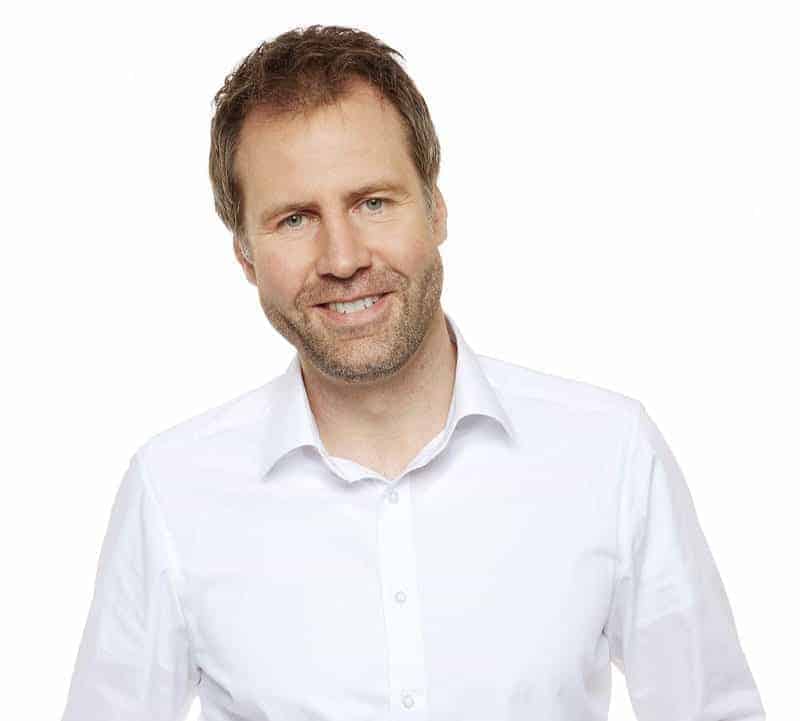Strategic engineering
![[shutterstock: 593780669_nostal6ie]](https://e3mag.com/wp-content/uploads/2021/04/Header_2105_shutterstock593780669.jpg)

For factories and industrial companies, the digital transformation primarily means one thing: flexible production that is becoming increasingly efficient and better able to meet the goal of largely self-sufficient production thanks to unhindered data flows and far-reaching analysis functions. Thanks to systems that are often modular in design, new technologies can also be easily integrated into existing systems and provide significant advantages within production, even in the case of future innovations.
While production is gaining particular flexibility through digital transformation, the reality for large IT architectures in many industries is different. Investments in powerful, customized applications or entire IT landscapes can quickly be wiped out by new framework conditions. Future developments that have a direct influence on the architectures of companies are difficult to estimate and can make long-term planning difficult.
The all-important question here is: Can the benefits of digital transformation within production also be transferred to IT architectures? One thing is certain: the goals are similar for both forms of the modern value chain. On the one hand, existing costs should be reduced wherever possible, and on the other hand, productivity should increase with every innovation to the system. The central difference, however, is how flexibly the various systems and their respective adaptations can be designed.
[adrotate banner="285″]
The dream of the green field
As in industry, a distinction is made in IT between greenfield and brownfield projects. While newly created IT architectures are initially planned in order to ultimately meet a specific goal - metaphorically, they are created on a greenfield site - in reality, however, this approach is usually only wishful thinking.
Many companies, especially medium-sized enterprises or hidden champions, have IT architectures that have already grown for decades and correspond exactly to the specifications of the respective companies. Due to investments that have taken place over years and contributed to this architecture, a completely new setup in the sense of a greenfield project is often out of the question for several reasons.
For example, ongoing operations must be ensured; corresponding IT capacities are therefore usually tied up. In addition, high costs for a completely new architecture act as a deterrent for many companies. This is particularly the case if large sums have already been invested in systems that are now out of fashion.
Meanwhile, hovering over everything is the uncertainty that a corresponding project, which can sometimes take several years to complete, may no longer be able to achieve the intended goals even during implementation. To escape this dilemma, it is worth taking a look at the modular design of production plants.
Use of resources
If you inspect a state-of-the-art brewery, for example, you will mainly find machines and systems from well-known automation companies. These systems and also individual modular components are tailored precisely to the requirements of the brewery in order to meet the desired ideas exactly. Such an approach can also be a way for IT architectures to achieve more flexibility within their own architecture.
Services such as Managed Cloud Sourcing from Devoteam S Team can achieve greater flexibility even within highly complex IT architectures. This service enables complex processes to be outsourced to experts who look after and manage the digital transformation for a wide range of different companies. This service provides companies with a partner who monitors and manages all aspects of the digital transformation.
The extensive knowledge of the situation on the market for digitization solutions is just as much an advantage here as the independence with regard to individual solutions. As a result, customers are protected from possible missteps in long-term strategic planning through comprehensive consulting. The best possible approaches for future-proof IT can then be determined on an equal footing.
A key aspect of this collaboration is that the respective solutions are developed jointly. For example, while the brewery and the automation company jointly plan the plant, IT managers should also plan the necessary steps to the desired architecture together with the relevant experts from service providers such as Devoteam. In this way, the transformation of specific applications can also be elicited and ultimately a move, for example to S/4 Hana, can be realized with appropriate CPIs.
In addition, cooperation with a competent partner is also a way of migrating databases to corresponding target landscapes more easily and quickly. In addition, the additional human power of a service provider can also mean important relief for the company's own IT staff.
The modular approach of production plants is still a utopia for the IT architecture of many companies. IT architectures in particular can often only be modernized at great expense to make them more productive and cost-efficient. With the help of experts, extensive projects can be managed much better, so that enormous flexibility as a central aspect of industry can also be transferred to IT.
Interview: Managed cloud sourcing from the user's perspective
Otto Group IT has decided to migrate its SAP landscape to the Google Cloud. What prompted you to do this?
Bartschat: At Otto Group IT, we have been using a wide variety of group solutions for some time, both standardized and customized to our needs. We use SAP and non-SAP systems to cover all aspects of application services. True to the motto "a rolling stone gathers no moss", we have joined forces with Devoteam to plan for a continued future-proof architecture for our systems and applications and have carried out a proof of concept for this purpose in 2019.
Subsequently, by migrating the SAP landscape to the Google Cloud, we discovered great potential in terms of technical performance and automation of activities for the SAP systems, in addition to greater flexibility.
How exactly does the migration work and what role does Devoteam S Team play in it?

Interview with Stefan Bartschat, Senior Expert Projects and OCC Services at Otto Group IT
BartschatThe actual transition has been taking place since March 2020 together with Devoteam. The SAP landscapes, which were initially hosted externally, will be moved in-house.
With regard to the changeover of the system architecture, we are supported by Devotem as well as in the development of agile deployment methods on the Google Cloud platform. As soon as the migration is complete, our partner will also help us to introduce Otto Group IT employees to the new system architecture and familiarize them with future tasks.
Why did you choose Devoteam and what do you particularly appreciate in the context of the cooperation?
Bartschat: From the very first discussions with the experts at Devoteam S Team GmbH, it became clear that they were specialists with an exceptionally high level of technical understanding of cloud providers and, of course, SAP and Hana.
In addition, Devoteam's well thought-out approach to cloud migration was promising from the outset and simply convinced all the people involved. In a project like this, it is important for good cooperation that the respective teams on both sides proceed not only with knowledge and expertise, but also with empathy.
In addition, the flexible agile approach that we have experienced on the part of Devoteam throughout the migration and the clear roadmap for the project are further aspects that we value highly in the collaboration.
Thank you for the interview.
SaaS, PaaS, IaaS, etc.:
With foresight through the thicket
SaaS, PaaS, IaaS, server-less, low-code platforms in the cloud - the list of modern IT offerings could be continued almost endlessly. IT managers and decision-makers are faced with a wide range of options for relieving the burden on their own infrastructure and using additional services as needed. There are offerings on the market for every company size and individual needs.
For the majority of companies, navigating this growing thicket of solutions and offerings is an enormous challenge. It is understandable that the overview is quickly lost due to the wide range of different cloud providers. In addition, for some companies, offerings from local data centers can also offer decisive advantages. Despite the immense choice, the goals of those responsible are usually quite similar: In the end, a redundant solution should be found that is characterized by high availability and equally high speeds.
The jungle of modern offerings changes within a very short time. Large cloud service providers regularly adapt their portfolios to new developments on the market, leading to ever greater differentiation of the available solutions. Price differences are often difficult to understand and depend on a wide variety of factors - for example, in the case of a high order volume. For many companies, it can therefore make sense to draw on the expertise of partners in the area of cloud services.
The experience of these experts with regard to the market and regular adjustments to the provider portfolios thus enable competent statements to be made regarding planning and strategy. Close observation and close contact with relevant data center providers, cloud service providers and market leaders also enable a reliable assessment of future changes with regard to the supply structure.
In addition, the assessments of corresponding experts regarding the multitude of different pricing models are an opportunity for companies to save costs and switch to models such as pay as you use instead of having to use a rigid pricing policy. Strategic planning is thus based on a solid foundation. Although the jungle of potential as-a-service solutions will continue to grow denser, this approach allows decisions to be made that enable companies to achieve sustainable planning.







